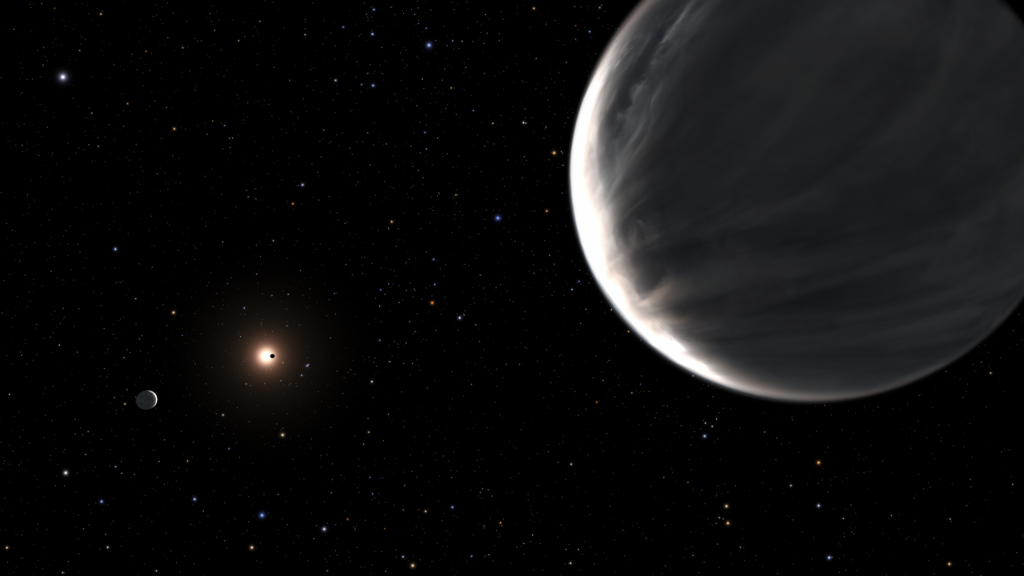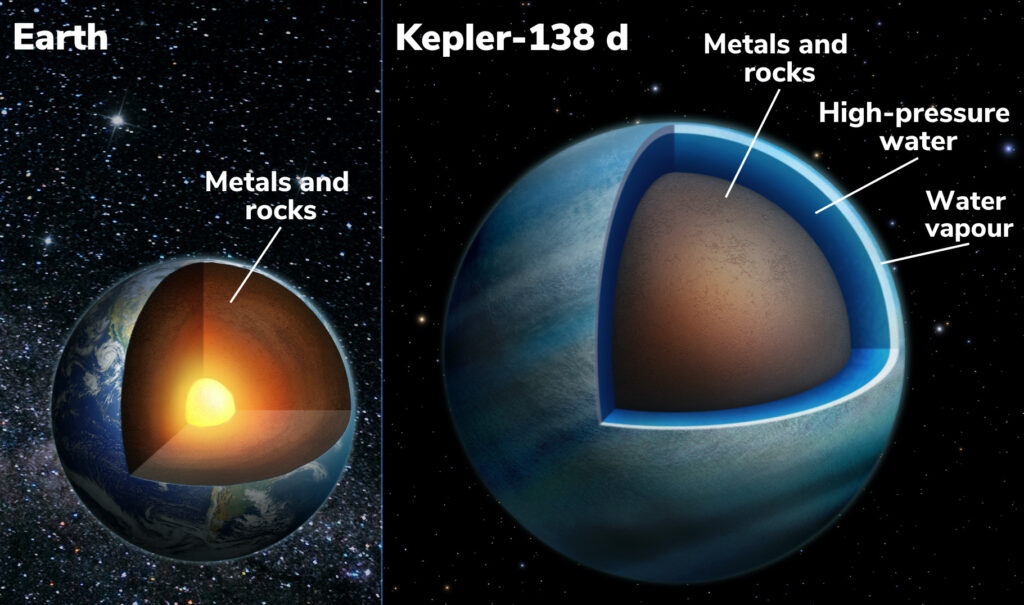A team of astronomers from the University of Montreal has published the results of studying two exoplanets orbiting the star Kepler-138. The available data indicate that with a high degree of probability they can be water worlds.
Water worlds in the Kepler-138 system
The star Kepler-138 is located 218 light-years away from us in the direction of the constellation Lyra. It is a red dwarf. Until recently, astronomers were aware of the existence of three exoplanets orbiting it.

The inner planet Kepler-138 b is a small rocky body resembling Mars in its physical characteristics. But the next two — Kepler-138 c and Kepler-138 d — are of much greater scientific interest. In the course of studying the data collected by the Hubble and Spitzer telescopes, astronomers determine that their radii are about 1.5 times the radius of our planet. As a rule, exoplanets of this size are rocky super-Earths. However, the masses of Kepler-138 c and Kepler-138 d are only 2.3 and 2.1 times the mass of the Earth. This means that their average density is much smaller than Earth’s and comparable to the density of the ice giants — Uranus and Neptune.
Based on this, astronomers have come to the conclusion that about half of the internal volume of these two worlds should consist of materials that are lighter than rock, but heavier than hydrogen or helium. The most obvious candidate is water.

The model developed by scientists shows that, most likely, Kepler-138 c and Kepler-138 d have a rocky core surrounded by a thick water mantle. At the same time, due to high pressure, it can exist in different states (for example, in the form of a supercritical fluid).
Since the orbits of Kepler-138 c and Kepler-138 d lie at a short distance from the central star, their surfaces receive much more energy than the Earth, and the atmospheres are heated to a temperature exceeding the boiling point of water. Therefore, astronomers believe that both exoplanets are surrounded by vast gas shells dominated by water vapor.
Exoplanet in the habitable zone
Due to the significant temperatures and peculiar atmospheric conditions, Kepler-138 c and Kepler-138 d do not look like a place suitable for the existence of habitual life. However, there is another exoplanet in this system, the existence of which has recently become known. It received the designation Kepler-138 e.
The planet was discovered by the same group of researchers who determined that Kepler-138 c and Kepler-138 d should represent water worlds. It makes one orbit its star in 38 days. Its orbit passes near the inner boundary of the habitable zone of the system. Unfortunately, this world is not a transit one, which does not yet allow astronomers to find out its diameter and, as a result, determine whether it is a rocky body, a gas giant or another water world.
According to https://www.nasa.gov
Follow us on Twitter to get the most interesting space news in time
https://twitter.com/ust_magazine

